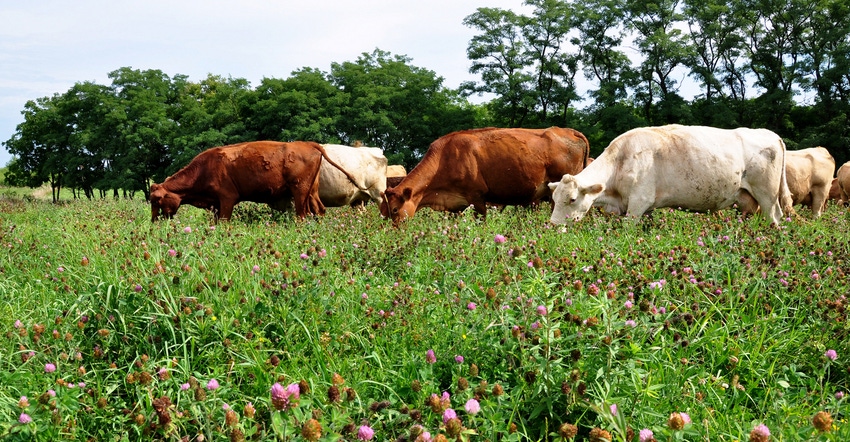January 29, 2018

Iowa farmers with grazing operations are encouraged to visit their local USDA Natural Resources Conservation Service office to learn about using conservation practices that treat a natural resource concern.
Example practices include prescribed grazing, watering facilities, watering pipelines and fencing.
Jeff Matthias, state grassland specialist for NRCS in Iowa, strongly encourages farmers to work with their local NRCS office to develop a grazing management plan, which can be implemented over time using conservation practices.
“Grazing management plans help farmers manage the soil, water, air, plant and animal resources, along with helping to design a system that will provide proper nutrition for grazing animals so they have high reproductive performance at the lowest cost,” he says.
Practices improve profitability
Many grazing practices not only treat a resource concern, but also help improve an operation’s overall profit and efficiency, Matthias says. “Popular practices like prescribed grazing and brush management help improve the plant community and improve forage accessibility, quality and quantity for livestock,” he says. “Many of these practices are an excellent long-term investment for a farmer.”
Similar to managing for cropland soil health, Matthias says grazing operators can benefit from managing pastures with soil health in mind. “As soil health improves, forage production will increase and fertility needs will decrease, leading to increased profits,” he adds.
NRCS offers a lengthy list of practices that treat resource concerns and improve pasture soil health, which are eligible for financial assistance through USDA’s Environmental Quality Incentives Program. Pasture management practices, such as prescribed grazing, forage and biomass planting, and stream and pond access control, offer producers a higher payment rate in Iowa.
EQIP funds aid pastures
Neal Sawyer of Sawyer Beef near Princeton in eastern Iowa first used EQIP in 2008 to improve the grazing system on his Scott County farm. He continues to use EQIP assistance to implement his grazing plan for several hundred acres, which he says helped him trench in water lines, put up fencing, remove brush, seed pastures and install a stream crossing.
“EQIP helped me move from a traditional system to a rotational grazing system through infrastructure improvements and development of a grazing plan,” Sawyer says. “The pasture improvements provided me the basis to start raising grass-fed beef more efficiently.”
NRCS accepts applications for EQIP on a continuous basis, but ranks and makes selections as funding allows. The next EQIP ranking and cutoff date for Iowa applicants is March 16. Call or visit your local NRCS office for more details about pasture management, or go online to ia.nrcs.usda.gov.
Source: NRCS
You May Also Like




